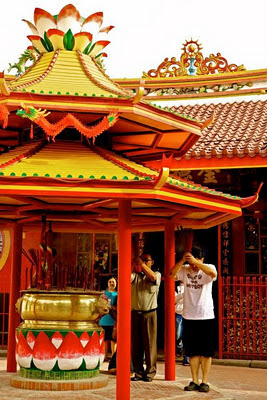Typical Culinary Celebration of Chinese New Year
Symbolic meaning behind the Chinese New Year specialties

Red-paced atmosphere which shows the feelings of joy from Chinese communities around the world, they welcome the Chinese New Year celebration (“Imlek” or “Sin Cia”) with great joy every year. Other communities receive and also welcomed, and it is immediately apparent from the various culinary treats.
Lunar New Year or Chinese New Year has a diverse traditions, in general there are some Chinese specialties that must be present and if we are lucky to be able tries everything. Chinese specialties certainly not arbitrary appear for guests or family members.


Every food on the religious day always has a symbolic meaning, for example, twelve kinds of dishes, as well as twelve kinds of cakes, represents the epitome of the twelve Chinese zodiac (Chinese shio).
This presentation describes the meaning of prosperity, longevity, happiness, or safety, though for some Chinese society with the ability to lower middle can provide longevity noodles, and celebrate by drinking liquor typical China, namely the Chinese wine (“arak”).


Here's a common distinctive culinary served at Chinese New Year celebrations.
1. Cake Basket
2. Spekkoek (layer cake)
3. Milkfish
4. Siu Mie (Siu Noodle)
5. Oranges and bananas
6. Sugar cane, watermelon and pineapple
Of all the culinary offerings at the top, there is also a dish that should not recommended to be served, the porridge as it symbolizes poverty or distress. Then one type of material for vegetables are foods like bitter melon (paré) should also be avoided, because it symbolizes the bitterness of life.
We are also delighted with the celebration of the Chinese New Year and say, "Gong Xi Fa Chai"... Happiness and Prosperity!
----------------------------------------------------------------------------------------------------------
(Source CNN Indonesia /Images M Kretyawan, Fransisca Pandi)


Comments
Post a Comment